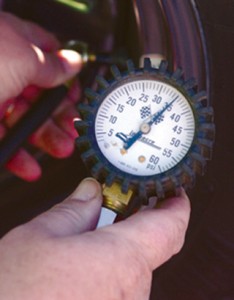 Responsible car ownership begins with routine maintenance checks.
Responsible car ownership begins with routine maintenance checks.
Changing a Tire
Your car’s manual will have instructions on where to locate the items you will need to change a tire, and it’s best to know ahead of time where these items are and if you have everything. Basic tips for changing a tire include:
– Know the location of the spare tire, the tire jack and the tire iron
– When using a tire jack, always make sure you are on level ground
– Loosen the lug nuts before raising the car off the ground, then finish taking them off once the tire is raised off the ground.
– When finished, tighten the lug nuts by hand, then lower the tire and finish tightening using the tire iron.
Changing Wiper Blades
Wiper blades usually come on and off by squeezing and/or twisting the clips holding the wiper blades to the arms. Be sure to check how your blades are first placed on your car so that you can reverse the process when installing your new wiper blades.
Checking Fluids
The fluids in your car will be contained in reservoirs that use measuring sticks or caps that indicate how much fluid is contained. Some reservoirs are clear and will contain marks on the side indicating fluid levels. Be sure to periodically check the fluid levels in your car or have your mechanic check your fluid levels during routine maintenance services.
Tire Pressure
You will need a tire pressure gauge to check the air pressure in your tire. Firmly insert the gage into the valve stem to get the pressure reading. Always do this at least two times to ensure the reading is accurate.
Check Belts
Your car’s engine has a series of belts used to operate the car. Look for signs of wear such as cracking or pieces that are torn off. Have a mechanic periodically check your belts and replace them as needed.
